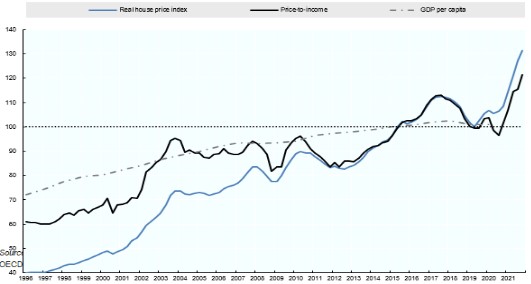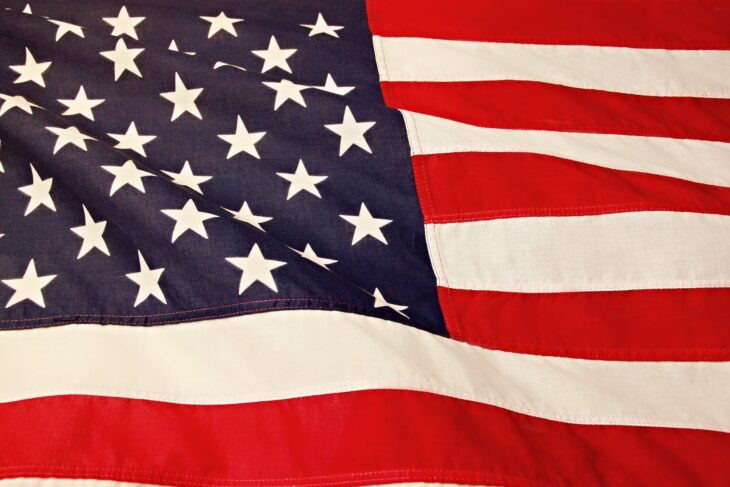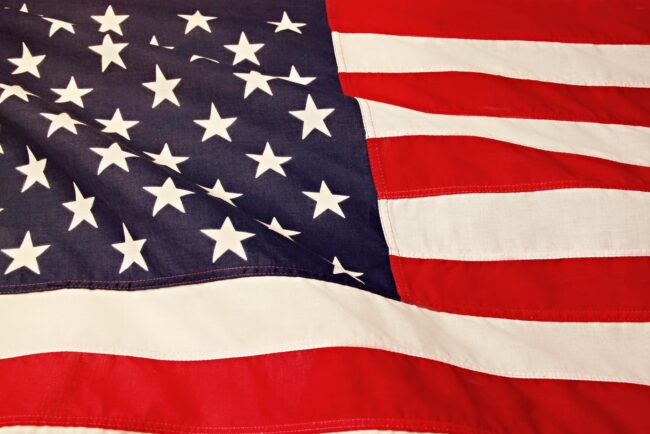by Robert Hamilton
To suggest that drugs, such as cannabis, opium and hallucinogens, can expand human consciousness and contribute to artistic creativity contradicts the message of the state/popular press about the social menace, and costs to our health, posed by these so called ‘demon’ drugs (Burroughs 1969:430), (Himmelstein 1983:23). [1] There is, however, an absence of solid research, by both medical and social scientists, into questions about drugs and human consciousness, leaving us with published narratives of personal experiences. (Weil 1986:101).[2] Perhaps, this is, as it should be, when considering journeys into the intensely, intimate world of human consciousness?[3]
Celebrated writers, have shared their insights into the effects of certain drugs upon their own creativity and awareness. Opium use, may in fact, date back to the classical age of Ancient Greece and Rome, with some evidence in the extant literature suggesting this (Plant 2000:5). [4] Aldous Huxley, the twentieth century English author, wrote a number of very influential novels based on his own experiences with hallucinogenic drugs, like peyote, mescaline and LSD (Huxley 1972:2).[5] Huxley poses questions about how we perceive Art, nature, symbology; and most of all their meaning to us. Hallucinogenic drugs appear to change perception, and often increase the experience of ‘meaning’ for the user, by focusing awareness on aspects of life previously unnoticed.
Continued in Drugs Dreams and Consciousness by Robert and Sudha Hamilton
©Robert Hamilton

[1] “UNFORTUNATELY the word ‘drug’ activates a reflex of fear, disapproval. and prurience in Western. nervous systems. ‘Drug’ of course is simply a generic term for any chemical agent. Alcohol is a sedative drug similar in action to the barbiturates~ Yet because of· purely verbal associations We do not think of alcohol as being a drug because it is our national drug.”, The’ American narcotics, department has bracketed substances with opposite physiological effect as narcotic drugs. Morphine is actually an antidote for cocaine poisoning, Cannabis is a hallucinogen, drug with no chemical or physiological affinity to either cocaine or morphine. Yet cocaine, morphine, and cannabis are all classified as ‘narcotic drugs’.” Burroughs, W.S. ‘Points of Distinction Between Sedative and Consciousness-Expanding Drugs. In D Solomon (ed), The Marijuana Papers. Book Two: An Examination of Marijuana in Society, History and Literature. London: Panther, 1970, P -. 430.
[2] “Conventional scholarship does not help us answer this question because it has never asked it. Although the drug use of South American Indians has been looked at by anthropologists, botanists, and pharmacologists, it has never been studied by anyone interested primarily in alteration of consciousness Nor has anyone visited these tribes with the express purpose of finding out why they fare better than we do in their relationships with substances that trigger altered states of consciousness.” Weil, Andrew. “Clues from the Amazon” in Natural Mind: An Investigation of Drugs and the Higher Consciousness , Weil, Andrew , 1986 , P – 101.
[3] “O, what a world of unseen visions and heard silences, this insubstantial country of the mind! What ineffable essences, these touchless remembering and unshowable reveries! And the privacy of it all! A secret theatre of speechless monologue and prevenient counsel, an invisible mansion of all moods, musings, and mysteries, an infinite resort of disappointments and discoveries. A whole kingdom where each of us reigns reclusively alone, questioning what we will, commanding what we can. A hidden hermitage where we may study out the troubled book of what we have done and yet may do. An introcosm that is more myself than anything I can find in a mirror. This consciousness that is myself of selves, that is everything, and yet nothing at all – what is it?” Jaynes. Julian, The Origin Of Consciousness In The Breakdown Of The Bicameral Mind, Mariner Books – Houghton Mifflin Co, New York, 2000. P – 1.
[4] “Opium was used in ancient Greece, where Plotinus was said to be a regular user of a drug to which Homer is thought to refer in the Odyssey when he describes “a medicine to banish grief”. Opium was also known in Rome, where it acquired an association with Morpheus, the god of dreams, who later gave his name to morphine.” Plant, S. ‘Private Eyes’. In Writing on Drugs. New York: Farrar, Straus & Giroux, 2000, P -. 5.
[5] ” The change which actually took place in that world “was in no sense revolutionary. Half an hour after swallowing the drug I became aware of a slow dance of golden lights. A little later there were sumptuous red
surfaces swelling and expanding from bright nodes of energy that vibrated with a continuously changing, patterned life. At another time the dosing of my eyes revealed a complex of gray structures, within which pale
bluish spheres kept emerging into intense solidity and, having emerged, would slide noiselessly upwards, out of sight. But at no time were there faces or forms of men or animals. I saw no landscapes, no enormous spaces, no magical growth and metamorphosis of buildings, nothing remotely like a drama or a parable. The other world to which mescalin admitted me was not the world of visions; it existed out there, in what I could see with my eyes open.” Huxley, A , ‘The Doors of Perception’. In The Doors of Perception and Heaven & Hell. London: Chatto & Windus, 1972, P – 16.
[6] “At the core of Romantic literature was a resurgence of the imagination, flights
of fancy allied to narrative rather than description.. Romanticism contained a new awareness of nature and the natural world, emphasised the need for spontaneity in thought and action, attaching considerable importance to natural genius exhibited through imagination. It also embodied a more liberated and
subjective expression of passion, pathos and personal feelings. Opium, and the liberty of thought it produced, was instrumental in the development of the Romantic ideal.” Booth, M. ‘Pleasure Domes in Xanadu’. In Opium: a History, London: Simon, & Schuster. 1996, P – 3.
[7] “This, at any rate, is the implication of the circumstantial note he wrote on the earliest known manuscript of the poem (the Crewe Ms, now in the British Museum, which is reproduced in full on the end-papers of this volume). “This fragment with a good deal more, not recoverable, composed, in a sort of Reverie brought on by two grains of Opium taken to check a dysentery, at a Farm House between Porlock & Linton, a quarter of a mile from Culbone Church, in the fall of the year, 1797.” Holmes Richard, Coleridge Early Visions, Harper Collins Publishers, London, 1998, P – 162.
[8] “In ordinary dreams, colours (if they appear at all) are unenhanced and realistic In an opium dream, reds darken to maroons and blood crimsons, blues blacken to the colour of an early night sky, whilst yellows
become solid and more luminescent. What is more, colours take on an almost tangible texture so the hue becomes only a part of their impact: one does not just see them, one also feels them.” Booth, M. ‘Pleasure Domes in Xanadu’. In Opium: a History, P – 38.
[9] “Her lips were red, her looks were free,
Her locks were yellow as gold:
Her skin was as white as leprosy,
The Nightmare Life-in-Death was she,
Who thicks man’s blood with cold.”
Excerpt from The Ancient Mariner, Coleridge Samuel Taylor, Spiritual Writings – Selected Poems and Prose, Harper Collins, London, 1997, P – 19.
[10] “This is the doctrine of the true church on the subject of opium: of which church I acknowledge myself to be the only member – the alpha and the omega: but then it is to be recollected, that I speak from the ground of a large and profound personal experience: whereas most of the unscientific authors who have written expressly on the materia medica, make it evident, from the horror they express of it, that their experimental knowledge of its action is none at all.” De Quincey Thomas, Confessions of an English Opium Eater, Penguin English Library, London, 1972, P – 7.
[11] “Baudelaire and other artists and writers, such as Dumas, Balzac, and Flaubert, were part of a group known as the “Le Club des Hashashins” (The Hashish Eaters Club) .. Members of this group, like the beats of the
1950s, yearned for new sensations and mystical experiences, and they found them in drugs.. At club meetings various experiments were conducted on the relationship between drugs and creativity, but when it was
all over Baudelaire concluded drug taking does not cause one to be more creative.. It merely magnifies what is already there:
“Let it be well understood then, by worldly and ignorant folk, curious of acquaintance
with exceptional joys, that they will find in hashish nothing miraculous,
absolutely nothing but the natural in a superabundant degree. The brain and
the organism upon which hashish operates will only give their ordinary and individual
phenomena, magnified, it is true, both in quantity and quality, but always
faithful to their origin .. Man cannot escape the fatality of his moral and physical
temperament Hashish will be, indeed, for the impressions and familiar thoughts
of the man, a mirror which magnifies, yet no more than a mirror.” Levinson, M.H. ‘The Quest for Instant Enlightenment: Drugs and Literary Creativity’. In The Drug Problem: A New View Using the General Semantics Approach, Westport, CT: London, Praeger, 2002. P – 85.
[12] “The two related hypotheses underlying this project were far more controversial in 1973 than they would be today, although they are still not generally accepted I contended, first, that in order to understand what impels someone to use an illicit drug and how that drug affects the user, three determinants must be considered: drug (the pharmacologic action of the substance itself), set (the attitude of the person at the time of use, including his personality structure), and setting (the influence of the physical and social setting within which
the use occurs) (Weil 1972; Zinberg & Robertson 1972; Zinberg, Rarding & Winkeller 1981) “ Zinberg Norman E, Drug, Set, & Setting – The Basis for Controlled Intoxicant Use, Yale University Press, New Haven and London, 1984, P – 5.
[13] “The argument works in both directions: because learned and brilliantly imaginative writers like Coleridge and De Quincey saw fantastic visions under the influence of opium, it does not follow that ordinary addicts will do so; but equally because uneducated unimaginative delinquents today see no visions under opium, it does not follow that Coleridge or De Quincey were either lying when they said they had such visions, or psychopaths because they had them.” Hayter, A. ‘Case Studies’. In Opium and the Romantic Imagination. London: Faber, 1968, P – 38.
[14] “The opium doses had completely blocked his bowels. The shame, guilt and horrid symbolism of this seized upon him. His body had closed upon itself, just as his mind had become fruitless and unproductive. He was a vessel full of mephitic horror. His journal becomes extraordinarily explicit, and details his sufferings with weird, unsparing exactitude. “Tuesday Night, a dreadful Labour, & fruitless throes, of costiveness – individual faeces, and constricted orifices. Went to bed & dozed & started in great distress.” Holmes Richard, Coleridge Darker Reflections, Harper Collins Publishers, London, 1998, P – 14.
[15] “The imagination of Jean Cocteau (1889-1963), poet, writer, filmmaker, novelist and artist, no doubt benefited from his frequent sorties into the world of opium. Cocteau, a veteran opium smoker by the time he checked in for a cure at a Saint Cloud clinic in 1928,20 produced a work called Opium. The Diary of a Cure It is a startling book, not the least because of the powerful images drawn by Cocteau during his stay.” “The work which exploits me needed opium; it needed me to leave opium; once more, I will be taken in And I was wondering, shall I take opium or not? I will take it if my work wants me to And if opium wants me to
Hodgson, B ‘The Writer’s Muse’. In Opium: a Portrait o the Heavenly Demon. San Francisco: Chronicle books, 1999,P – 93.
[16] “Making love, having sex, it is a moment when we return to our interior universe and tune into our sensory responses. It is an intensely personal experience, which is also shared, in an intimate revelation of our essentially animal natures. We roar and groan, grunt and grasp, in a symphony of respiratory action, for our ride to pleasure is carried on each breath. It is that breath, which makes sexual activity a possible doorway to the divine. Reading Tim Winton’s novel, Breath, you can sense the parallels between experiences of the ocean and sexual experiences. Metaphorical language used to describe the tumbling; submerged qualities inherent inside a wave are similar to the ocean of bliss, inside us, which can well up during sex. At times we are letting go to the inextricable force of the sea, as we must ‘let go’ to the surging currents within our sexuality. We ride upon, and inside, our wave of ecstasy and our breathing triggers the biochemical reactions, which can awaken orgasmic brain activity.” Hamilton Sudha, House Therapy – Discovering Who You Really Are At Home, Midas Word Publications, Maleny QLD, 2012, P – 98-99.
[17] “Shooting alone is like masturbating. In a group it is more like an orgy.” (Des Jarlais et al 1986:119) … But in a couple, it is most like sex. This goes far beyond the somewhat phallocentric imagery of sexual congress I have suggested above. “Running partners, who seek out, purchase and consume heroin together, frequently develop a close relationship. The ritual blood-brotherhood of needle use – furtive and taboo – is further strengthened by the experience of heroin use itself, through which partners begin to develop a shared physical rhythm of life, getting high together, and suffering withdrawal together. (Des Jarlais et al 1986:119) The physical effect of heroin, moreover, is to lessen libido.” Manderson, Desmond. “Metamorphoses: Clashing symbols in the social construction of drugs” Journal of Drug Issues , 25:4 , 1995 , P – 806.
[18] “So start moving from the periphery to the centre of your being. All ways of meditation are nothing but methods to move from the periphery to the being. The periphery consists of on-thought. So move from thoughts to no-thoughts; drop as many thoughts as possible. Neglect them, ignore them. Don’t feed them anymore, don’t nourish them anymore, don’t relish them, don’t welcome them; just be indifferent. They will come out of old habit but don’t pay them any attention; don’t even say hello. Just sit there indifferent, and slowly slowly, when they are not received, just as guests disappear when they are not received, thoughts also disappear.” Rajneesh Bhagwan Shree, Believing the Impossible Before Breakfast, Rajneesh Foundation, Pune, India, 1981, P – 91.
[19] “A major issue after drugs is cravings. It has been estimated that of the people who get off drugs through recovery programs, at least eighty percent go back to drugs within a year. Cravings are seen as a primary cause, and suppressing cravings is seen as a key part of recovery.” Sauer Jost, Drug Repair That Works, Allen & Unwin, Sydney, 2009, P -113.
[20] “Like most other researchers in the field, Osmond was primarily interested in psychosis and mental illness.. In 1952 he shocked the medical world by drawing attention to the structural similarity between the mescaline
and adrenaline molecules, implying that schizophrenia might be a form of self-intoxication caused by the body mistakenly producing its own hallucinogenic compounds. Osmond noted that mescaline enabled a normal person to see the world through the eyes of a schizophrenic, and he suggested that the drug be used as a tool
for training doctors, nurses, and other hospital personnel to understand their patients from a more intimate perspective.” Lee, M.A. ‘Psychedelic Pioneers’. In Acid Dreams. New York: Grove Weidenfeld, 1992, P – 45.
[21] “Whereas the CIA sought to impose an altered state on its victims in order to control them, Huxley’s explorations were self-directed and designed to expand consciousness.” Lee, M.A. ‘Psychedelic Pioneers’. In Acid Dreams. New York: Grove Weidenfeld, 1992, P – 47.
[22] “Pharmacologists cling to this way of thinking because they imagine pure compounds give better
results .. What they mean is that laboratory studies can be designed more rigorously if one administers exact doses of single compounds. But if experimental rigor is obtained at the expense of relevance to the world beyond the laboratory, it is not desirable.. People do not eat THC outside of laboratories; they smoke marijuana. The subjective experience of smoking marijuana is not the same as the subjective experience of eating (or smoking) THC. Similarly, mescaline is not peyote, cocaine is not coca,” morphine is not opium.” Weil, Andrew. “Clues from the Amazon” in Natural Mind: An Investigation of Drugs and the Higher Consciousness , Weil, Andrew , 1986 , P – 104.
[23] “Almost half a century ago, a powerful experience lasting only several hours of clock-time profoundly changed my personal and professional life. As a young psychiatric resident, only a few months after my graduation from medical school, I volunteered for an experiment with LSD, a substance with remarkable psychoactive properties that had been discovered by the Swiss chemist Albert Hoffman in the Sandoz Pharmaceutical Laboratories in Basel.
This session, particularly its culmination period during which I had an overwhelming and indescribable experience of cosmic consciousness, awakened in me an intense, lifelong interest in non-ordinary states of consciousness. Since that time, most of my clinical and research activities have consisted of systematic exploration of the therapeutic, transformative, and evolutionary potential of these states.” Grof Stanislav, When the Impossible Happens- Adventures in Non-Ordinary Realities, Sounds True, 2006, P – 15.
[24] “As a result of this, transpersonal psychology was extremely vulnerable to accusations of being irrational, unscientific, and even “flaky” particularly by scientists who were not aware of the vast body of observations and data on which the new movement was based. These critics also ignored the fact that many of the pioneers of this revolutionary movement had impressive academic credentials. These pioneers generated and embraced the transpersonal vision of the human psyche not because they were ignorant of the fundamental assumptions of traditional science, but because they found the old conceptual frameworks seriously inadequate in accounting for their experiences and observations. Much of the resistance came from representatives of the academic community, who saw the current scientific worldview as an accurate and definitive description of reality and clung to it with stubborn determination, impervious to any evidence countering it.” Grof Stanislav, When the Impossible Happens- Adventures in Non-Ordinary Realities, P – 324.
[25] “Among the most interesting phenomena I have encountered in my research of holotropic states of consciousness have been without any doubt past-life experiences. They occurred with extraordinary frequency in psychedelic sessions of my clients, in sessions of Holotropic Breathwork, and in the course of spontaneous psychospiritual crises (“spiritual emergencies”) of the people we have worked with.” Grof Stanislav, When the Impossible Happens- Adventures in Non-Ordinary Realities, P – 135.
[26] “Twenty-five years ago I began to grapple with the realization that exploring the “Wholly Other” was related to shamanism. Pursuing that insight led me to use plant hallucinogens as a means of probing the mysterious dimension, this oldest of humanity’s religions has always claimed to be able to access. Of all the techniques used by the shaman to induce ecstasy and visionary voyaging – fasting, prolonged drumming, breath control, and stressful ordeals – I now feel confident that the use of hallucinogenic plants is the most effective, dependable, and powerful.” McKenna Terrence, The Archaic Revival, Harper San Francisco, 1991, P – 2.
[27] “McKenna, as it turns out, has never met Tim Leary, whom, it seems, he is about to replace as the culture’s foremost spokesperson for the psychedelic experience. Where Leary was brilliant and original in both his experimentation and his salesmanship, McKenna is brilliant, scholarly, and priestly (in the best sense of the word). In fact, though a child of the sixties, the forty-one-year-old McKenna came to his fascination with ‘ethnopharmacology’, as he calls it, not through Leary but through the far more cautious and spiritual Aldous Huxley, whose Doors of Perception he read when he was fourteen.” McKenna Terrence, The Archaic Revival, Harper San Francisco, 1991, P – 7.
[28] “Our art, too, both high and low, both popular and elitist, amply reflects and dramatizes how strongly addiction as a social, physical, and psychological phenomenon has affected our culture. Surely art
imitates life at least to the extent that it would be surprising not to find addiction somehow reflected in contemporary art, much as we find the profound influences of evolution, psychoanalysis, or the civil rights
movement. Indeed, I shall argue that addiction has been recorded in art not only as a historical phenomenon, but also as a primary trope to identity and suggest many of the central concerns of postmodernism.
Addiction has, in short, become yet another of the many lenses through which we examine, order, and express our collective experience of the world, and it is used repeatedly by postmodern writers to evoke a pervasive state of contemporary being.” Carpenter, Enhancing the Possibilities of Desire: Addiction as Postmodern Trope'(Opium, Heroin, and the Novelists of the Romantic Imagination), Southern Humanities Review, 2001, 35 (3): P -229.
[29] “There is a circumscribed place in organic nature that has, I think, important implications for students of human nature. I refer to the tryptophan-derived hallucinogens dimethyltryptamine(DMT), psilocybin, and a hybrid drug that is in aboriginal use in the rain forests of South America, ayahuasca. This latter is a combination of dimethyltryptamine and a monoamine oxidase inhibitor that is taken orally. It seems appropriate to talk about these drugs when we discuss the nature of consciousness; it is also appropriate when we discuss quantum physics.” McKenna Terrence, The Archaic Revival, Harper San Francisco, 1991, P – 34.
[30] “Rick Strassman MD performed the first new human studies with psychedelic drugs in the US in over 20 years. His research involved the powerful naturally-occurring compound, DMT – N,N-dimethyltryptamine. Led to this substance through his earlier study of the pineal gland as a potential biological locus for spiritual experiences, he administered several hundred doses of DMT to approximately 60 volunteers between 1990 and 1995. He wrote about this research in the popular book, Strassman Rick, DMT: The Spirit Molecule, Park Street Press, South Paris, 2000.
[31] “The shaman asks the sick man about his symptoms and his dreams. Either the shaman or a close male relative of the patient prepares and cooks the leaves of the chacruna and the liana of the ayahuasca to concoct a hallucinogenic brew. (Sometimes, where ayahuasca is not easily available shamans begin curing without taking it, and procure it the next day if the patient is still sick.) Early in the evening the shaman and most of the other men begin to drink the cooled liquid. The men chant; the shaman sings a curing song: and slowly a vision appears before his eyes of the image from the sick man’s dream. The shaman speaks of his vision as he experiences it.” Siskind, Janet. “Visions and cures among the Sharanahua” in Hallucinogens and Shamanism , Harner, Michael J. , 1973 , P -33.
[32] “It is unfortunate that cannabis (the Latin term for preparations made from the hemp plant, such as marihuana and hashish), which is certainly the safest of the hallucinogen drugs, should be subject to the heaviest legal sanctions. Unquestionably this drug is very useful to the artist, activating trains of association that would otherwise be unaccessible, and I owe many of the scenes in Naked Lunch directly to the use of cannabis.” Burroughs, W.S. ‘Points of Distinction Between Sedative and Consciousness-Expanding Drugs. In D Solomon (ed), The Marijuana Papers. Book Two: An Examination of Marijuana in Society, History and Literature, P -. 434.
[33] “Human consciousness is just about the last surviving mystery. A mystery is a phenomenon that people don’t know how to think about – yet. There have been great mysteries: the mystery of the origin of the universe, the mystery of life and reproduction, the mystery of the design to be found in nature, the mysteries of time, space, and gravity. These were not just areas of scientific ignorance, but of utter bafflement and wonder. We do not have all the answers to any of the questions of cosmology and particle physics, molecular genetics and evolutionary theory, but we do know how to think about them… With consciousness, however, we are still in a terrible muddle. Consciousness stands alone today as a topic that often leaves even the most sophisticated thinkers tongue-tied and confused. And, as with all of the earlier mysteries, there are many who insist – and hope – that there will never be a demystification of consciousness.” Dennet Daniel C, Consciousness Explained, 1991. Calvin William H, How Brains Think, Weidenfeld & Nicholson, London, 1997, P – 27.
BIBLIOGRAPHY
Booth, M. ‘Pleasure Domes in Xanadu’. In Opium: a History, London: Simon, & Schuster. 1996.
Burroughs, W.S. ‘Points of Distinction Between Sedative and Consciousness-Expanding Drugs. In D Solomon (ed), The Marijuana Papers. Book Two: An Examination of Marijuana in Society, History and Literature. London: Panther, 1969.
Calvin, William H, How Brains Think, Weidenfeld & Nicholson, London, 1997.
Carpenter, Enhancing the Possibilities of Desire: Addiction as Postmodern Trope'(Opium, Heroin, and the Novelists of the Romantic Imagination), Southern Humanities Review, 2001.
Coleridge, Samuel Taylor, Spiritual Writings – Selected Poems and Prose, Harper Collins, London, 1997.
De Quincey, Thomas, Confessions of an English Opium Eater, Penguin English Library, London, 1972.
Grof, Stanislav, When the Impossible Happens- Adventures in Non-Ordinary Realities, Sounds True, 2006.
Jaynes. Julian, The Origin Of Consciousness In The Breakdown Of The Bicameral Mind, Mariner Books – Houghton Mifflin Co, New York, 2000.
Hamilton, Sudha, House Therapy – Discovering Who You Really Are At Home, Midas Word Publications, Maleny QLD, 2012
Harding, Wayne M.; Zinberg, Norman E. “The effectiveness of the subculture in developing rituals and social sanctions for controlled drug use” in Drugs, Rituals and Altered States of Consciousness , Du Toit, Brian M. , 1977.
Hayter, A. ‘Case Studies’. In Opium and the Romantic Imagination. London: Faber, 1968.
Himmelstein, Jerome L. “From killer weed to drop-out drug: The changing ideology of Marihuana”Contemporary Crises: Crime, Law, Social Policy , 7:1 , 1983.
Hodgson, B ‘The Writer’s Muse’. In Opium: a Portrait o the Heavenly Demon. San Francisco: Chronicle books, 1999.
Holmes, Richard, Coleridge Early Visions, Harper Collins Publishers, London, 1998.
Holmes, Richard, Coleridge Darker Reflections, Harper Collins Publishers, London, 1998.
Huxley, A , ‘The Doors of Perception’. In The Doors of Perception and Heaven & Hell. London: Chatto & Windus, 1972.
Lee, M.A. ‘Psychedelic Pioneers’. In Acid Dreams. New York: Grove Weidenfeld, 1992.
Levinson, M.H. ‘The Quest for Instant Enlightenment: Drugs and Literary Creativity’. In The Drug Problem: A New View Using the General Semantics Approach, Westport, CT: London, Praeger, 2002.
Manderson, Desmond. “Metamorphoses: Clashing symbols in the social construction of drugs” Journal of Drug Issues , 25:4 , 1995.
McKenna, Terrence, The Archaic Revival, Harper San Francisco, 1991.
Plant, S. ‘Private Eyes’. In Writing on Drugs. New York: Farrar, Straus & Giroux, 2000.
Rajneesh, Bhagwan Shree, Believing the Impossible Before Breakfast, Rajneesh Foundation, Pune, India, 1981.
Sauer, Jost, Drug Repair That Works, Allen & Unwin, Sydney, 2009.
Siskind, Janet. “Visions and cures among the Sharanahua” in Hallucinogens and Shamanism , Harner, Michael J. , 1973.
Strassman, Rick, DMT: The Spirit Molecule, Park Street Press, South Paris, 2000.
Weil, Andrew. “Clues from the Amazon” in Natural Mind: An Investigation of Drugs and the Higher Consciousness , Weil, Andrew , 1986.
Zinberg ,Norman E, Drug, Set, & Setting – The Basis for Controlled Intoxicant Use, Yale University Press, New Haven and London, 1984.
Eco Living Magazine












Average Rating